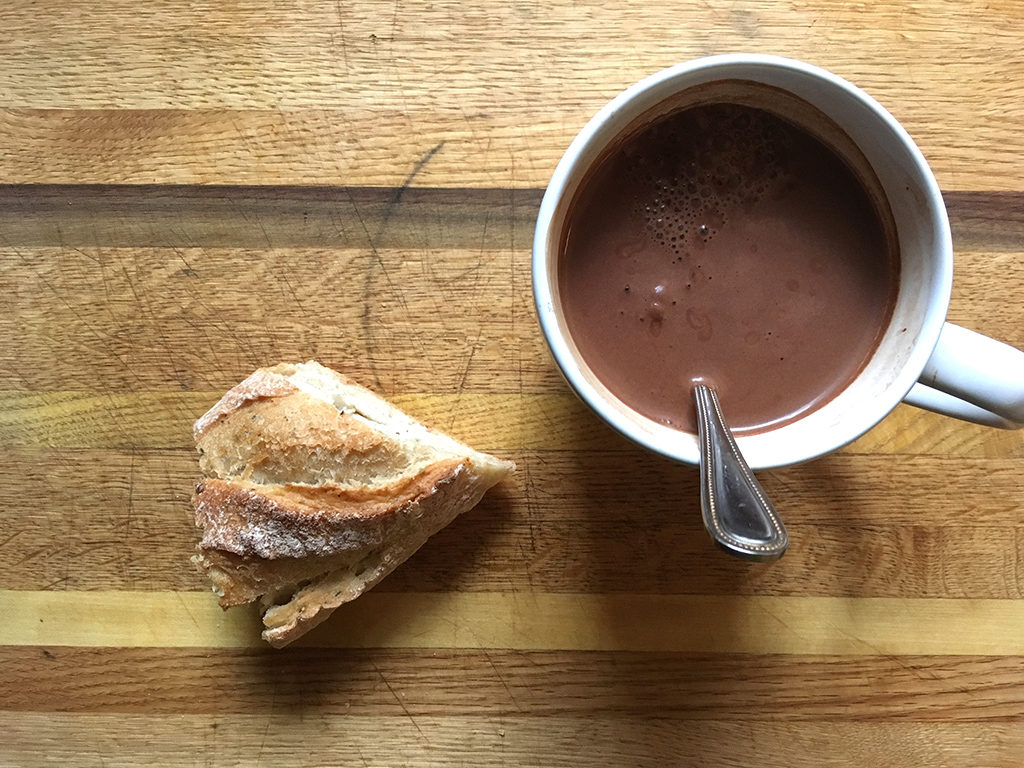 My sad ass ate my sad-ass breakfast.
My sad ass ate my sad-ass breakfast.
I woke up Wednesday morning feeling devastated. And I’ll tell you why: it’s a part of my life that I have not talked about publicly. In fact, on this blog–although I put myself through experiments like this one–I seldom talk about my personal life.
A little less than two years ago, I left an emotionally abusive marriage. I also experienced a sexual assault during this marriage; but, being a woman, it was not my first and it is unlikely to be my last. One of the reasons I am sad is because my country has elected a man who has been accused of dozens of alleged assaults; I feel by electing him, we continue normalize this behavior, and his presidency will create a permissive environment for what I went through to continue to happen to myself and other women. I woke up today feeling like I did in the darkest part of my marriage–unsafe, unloved, and trapped. That is how I feel in my country today.
So I ate my breakfast, and I was sad.
After breakfast, I went to Brooklyn to see my obgyn. I purchased my healthcare under the Affordable Care Act, because I am self-employed and therefore I am in charge of my own healthcare. Additionally, this past year I have been on Medicaid. Leaving my husband and dissolving my marriage was extremely financially difficult; the financial burden lifted by my free healthcare has been key to getting myself back on my feet. I worry about the repeal of the Affordable Care Act, and I worry about the rolling back of social services that have helped me get on my feet, but that so many other people still need.
I didn’t eat much the rest of the day, but around five I went to my part time job at the Lower East Side Tenement Museum, an institution devoted to telling stories about the history of immigration in order to make connections to the present. They asked the employees if they wanted to stop in for a chat and some pizza. So I ate some pizza.
 It was from Williamsburg Pizza on Broom Street and it was delicious.
It was from Williamsburg Pizza on Broom Street and it was delicious.
I realized that the food I ate yesterday, and the meals I’ll have later this week, aren’t really what we consider Italian-American food–like pizza. I was eating Italin food with some American influence; not the Italian-American cuisine that evolved in this country.
If you were a Southern Italian at the end of the 19th century, life was rough back home. A 1901 study that came out of England estimated the yearly income of a Southern Italian to be about $45 a year. But the average American laborer in 1901 could hope to make $750 a year. And although grains like wheat (in the South) and corn (in the North) were the staple diet, but the average Italian consumed about a third of the poundage per person compared to England, and half the poundage of meat of an “English workhouse pauper.” What they had was what they could grow in their vegetable gardens, what could be foraged from the forests and what they could get from their animals that they didn’t have to sell: eggs and milk made up a big part of the daily diet, as chickens and goats cost very little money to keep.
In America, Italian immigrants held on to their food traditions, but because they were making more money, they became incredible consumers of Italian imported food products: expensive olive oils, cheese, cured meats and semolina pastas. Meat, especially, was a sign of success; even immigrants who returned to Italy were often marked by their acquired American taste for beer and steak.
Those who stayed in America developed an Italian-American cuisine centered on abundance. The dishes invented here combined as many expensive ingredients on one plate as possible. American pizza is a perfect example: in Italy, these rounds of dough used were used to test the temperature of baking ovens; they were topped with cheap ingredients, like anchovies or pig fat (I would eat a pig fat pizza). The pizza places in America were set up by former farmers and laborers; they were not tied to the traditions of baking in their home country. They created a new pizza for America: a firmer crust laden with cheese and meat, meat, meat.
Pizza is now as American as hamburgers and hotdogs, and the type of pizza we make here is an uniquely American dish. We often talk about how immigrants who come to this country should change their ways, but I think it’s more important to remember the positive ways immigrants have shaped American culture and cuisine. For what would America be without pizza?
At my meeting at the Tenement Museum, we toasted Hillary. We talked about our fears. We talked about he importance of doubling down on advocacy and action. Sometimes we just sat in silence. My colleagues–men, women, people of color, immigrants–all felt like lesser people today. Less heard, less looked after, less powerful. Today it feels like a long road to change that.
On my way home, I swung by the drug store to buy some Pepto Bismol, because my stomach had been aching all day. Hilariously, there was a huge crowd of people around the antacids, comparing and discussing their various merits.
